There is an amazing cultural diversity inside the Middle’s Empire. If minority cultures sometimes suffered from the Cultural Revolution, they are still rich and alive nowadays.
The Zhuang : the second ethnic group of China
The Zhuang nation mived from Central China to Southern China about 5,000 years ago. They might have suffered from regular food shortages. Then they succeeded in developing an effective rice growing in Ghangxi. They are abot 18 millions today according to official figures.
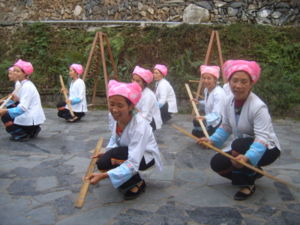
They got autonomy in Guangxi in 1958. Zhuang people mainly follow animists rites, but there are also buddhists, taoists, christians and muslims.The Zhuang language is still alive today. It used to be written in sinograms, but today the Latin alphabet is more and more used
The Hmong : people of the mountains.
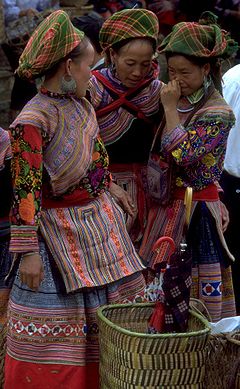
This millenium population particularly suffered from their position in the French and American Vietnam wars because of their support to French and American authorities. They are considered as traitors by local populations and still support much violence, which forces them to seek asyluum abroad or to flee in the jungle.
In Clint Eastwood’s last movie Gran Torino, the director speaks abput the Hmong community in the USA.
The Dong : a nation being completely autarkic.
The Dong people live in the regions of Ghizhou, Guangxi and Hunan. This very isolated population moved to mountainous areas in the 7th century because of a serious defeat against the Han. They have developed a very specific culture.
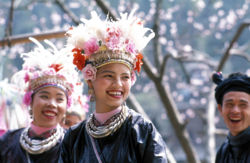
The Dong language is among the most difficult to learn. Thus there are 15 different tones as the Dongs divided by 3 each tone of the Mandarin language. Another specific characteristic is the use of singing as a way to express oneself with a large part of improvisation.
They also are in an economic autarky, they mainly grow rice.
The white costums of the Bai
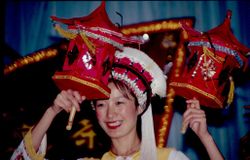
They are about two million Bai in China today who live in Hunan and Ghizhu, especially ner the city of Dali. Moreover, in this town, the authorities recognized 3 pagodas as historical monuments.
The Bai culture is ancient and is especially based on dancing and singing. Thus Bai have their own musical instruments.
The word Baizu means « white ethny » in Mandarin. This name actually comes from the traditionnal costum of the Bai people, which is mainly white.
The Akha : the clan above the person
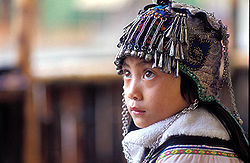
Another tradition, which was given up, consists in eliminate twins in some villages. In fact Hani thought that the special link between twins embodied a danger for the clan. Twins still have a bad image in the Akha society.
The matriarchal society of the Naxi
The Naxi are settled in Yunnan. The have their own culture, the Dongba culture, which refers to Dongba priests. They oractice rites for nature, especially water and mountains.
However, the Dongba culture is in danger, because it suffered form the Cultural Revolution. In fact there are less and less books and moreover less and less people are able to understand them. To save these books, the last ones were registered to the UNESCO’s list « Memory of the World ».
Thus the Naxi have thei typical hieroglyphic writting, which shows the ancient lifestyle of Naxi people.
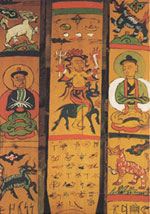
The Naxi from the North have a matriarchal society, where the mother transmits her name to her children. Women live with their brother and seldom with a husband. Relationships are free and children do not always know their father.
This matriarchal society is linked with the Naxi belief that hereditary characteristics are given by women’s bones.
Thomas PRADO for www.buddhachannel.tv




